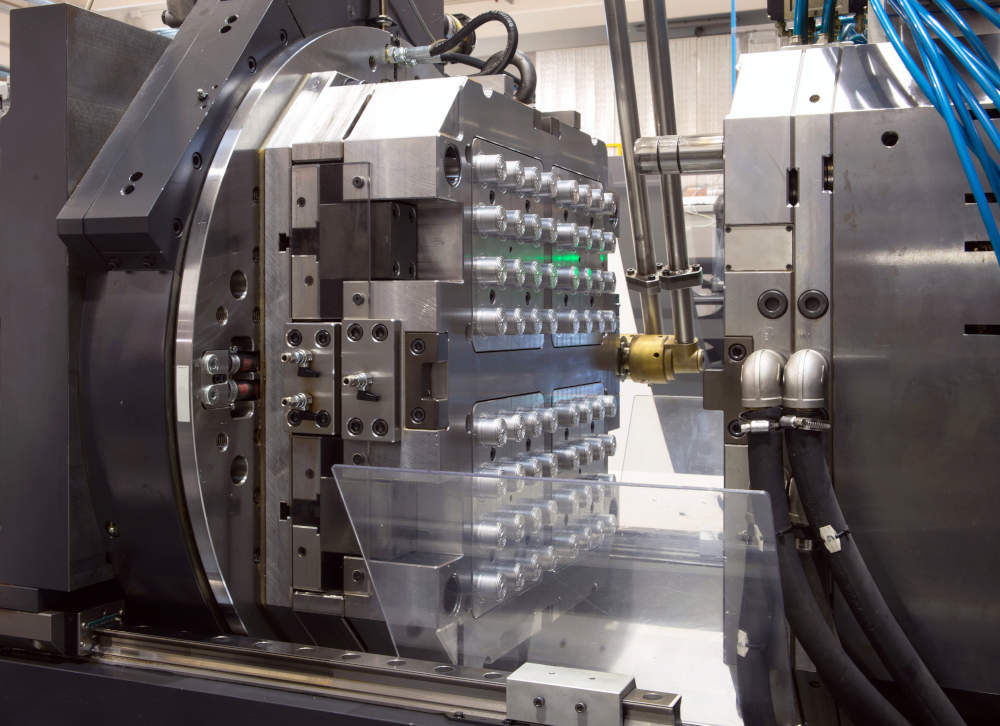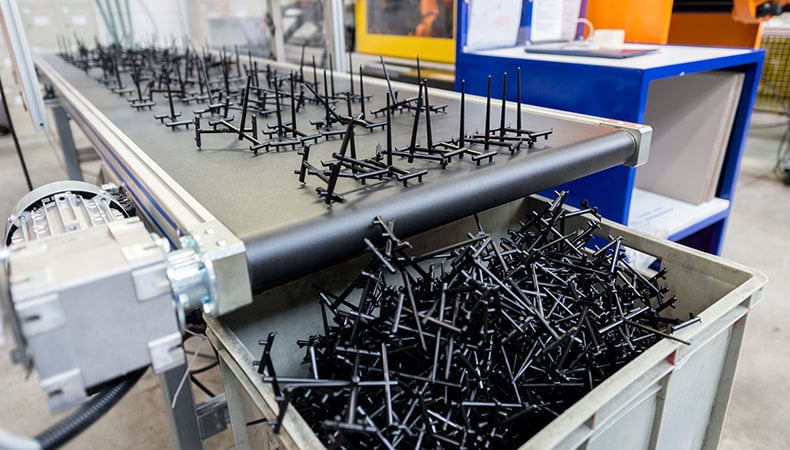Exploring the Future of Plastic Injection Molding in the Manufacturing Industry
Exploring the Future of Plastic Injection Molding in the Manufacturing Industry
Blog Article
Comprehending the Basics of Plastic Shot Molding Procedures
Plastic shot molding serves as a cornerstone of modern production, supplying a methodical method to producing complex parts with accuracy. Checking out these important elements can expose how even minor adjustments can lead to substantial enhancements in manufacturing results, increasing questions regarding the capacity for technology in this established process.
What Is Plastic Injection Molding?
Plastic injection molding is a widely used manufacturing process that changes polycarbonate and thermosetting products into exact and complicated forms. This method is preferred for its capability to generate high volumes of similar get rid of outstanding accuracy, making it an essential method in different sectors, consisting of automobile, durable goods, and medical devices.
The procedure involves melting the selected plastic product and injecting it right into a mold and mildew under high pressure. The mold and mildew, developed to the specs of the wanted part, allows the liquified plastic to take form as it strengthens and cools down. Once the product has actually solidified, the mold and mildew is opened up, and the finished part is expelled.
Plastic shot molding provides numerous advantages, including decreased waste, consistency in manufacturing, and the capacity to incorporate intricate styles that might be testing with various other making techniques. Additionally, it sustains a wide variety of products, each giving unique buildings that can be tailored for specific applications. As industries proceed to introduce, plastic shot molding continues to be at the center, making it possible for the growth of innovative products that fulfill evolving customer needs.
The Injection Molding Process
The injection molding procedure is an innovative method that includes a number of essential stages to generate high-quality plastic parts. Plastic pellets are fed right into a heated barrel where they are thawed right into a viscous liquid. This molten plastic is after that infused under high pressure right into a precision-engineered mold and mildew, which shapes the material right into the preferred form.
As soon as the mold and mildew is filled, the plastic is permitted to strengthen and cool down, taking the shape of the mold dental caries. Air conditioning time is important, as it affects the cycle time and the last buildings of the molded part. After sufficient cooling, the mold and mildew opens, and the finished element is ejected making use of ejector pins.

Products Utilized in Injection Molding
Different materials can be utilized in the injection molding process, each offering unique homes that deal with particular applications. The most typically used materials consist of thermoplastics, thermosetting plastics, and elastomers.

Thermosetting plastics, like epoxy and phenolic materials, undergo a chemical modification throughout the curing process, causing a rigid, inflexible framework. These products are optimal for applications calling for high heat resistance and structural honesty, often utilized in electric insulators and vehicle components.
Elastomers, consisting of silicone and rubber-based products, give flexibility and durability. Their special residential or commercial properties make them appropriate for applications that require flexibility, such as gaskets and seals.
Additionally, specialty materials like bio-based plastics and composites are acquiring traction for their environmental benefits and improved efficiency features, widening the extent of injection molding applications in various industries. Understanding the homes of these products is vital for picking the ideal kind for specific tasks.
Advantages of Injection Molding
Shot molding sticks out as a highly reliable manufacturing procedure that offers various benefits for creating intricate get rid of accuracy. One of the most significant advantages is the capacity to produce complex designs that go would be tough or difficult to attain with various other methods (Plastic Injection Molding). The process allows for comprehensive features and limited tolerances, guaranteeing premium components
In addition, shot molding is known for its quick manufacturing capabilities, making it an ideal selection for high-volume manufacturing. Once the mold and mildew is created, components can be created quickly, lowering lead times and increasing general productivity. This performance not only decreases production prices however additionally supplies an one-upmanship out there.
The adaptability of materials used in injection molding additionally improves its charm. A large range of thermoplastics and thermosetting polymers can be utilized, permitting makers to select materials that ideal meet their certain requirements, including warm, adaptability, and strength resistance.
Furthermore, the procedure lessens waste, as excess product can frequently be reused and recycled. This sustainability facet contributes to a minimized ecological impact, making injection molding an accountable production selection. On the whole, the advantages of injection molding make it a favored technique for several industries.
Factors Impacting Product High Quality
While countless variables can affect product quality in injection molding, understanding these elements is important for accomplishing ideal outcomes. Secret elements include material selection, processing parameters, and mold and mildew design.
Material selection plays a vital role, as different polymers exhibit unique residential properties that influence flowability, toughness, and thermal security. Insufficient material choice can lead to defects such as bending or insufficient filling.
Processing parameters, including cycle, pressure, and temperature time, have to be diligently regulated. Variants in these settings can cause incongruities partly dimensions and surface area coating. As an example, exceedingly heats may cause destruction of the polymer, while insufficient pressure can cause short shots.
Mold style is equally vital, as it figures out the flow of the molten plastic and the cooling procedure. Badly designed mold and mildews may lead to uneven cooling prices, leading to dimensional mistakes and residual anxieties.

Verdict
In verdict, plastic shot molding offers as an essential production procedure that makes it possible for the reliable manufacturing of high-grade components. Proficiency of the shot molding procedure, including the understanding of materials and the influence of various factors on item top quality, is necessary for attaining ideal results. The advantages of this approach, such as cost-effectiveness and check these guys out layout versatility, additional underscore its value throughout several industries, strengthening its standing as a favored choice for high-volume manufacturing.
Plastic injection molding serves as a cornerstone of modern manufacturing, giving a systematic technique to generating complicated components with accuracy.Plastic injection molding offers numerous advantages, consisting of lowered waste, consistency in manufacturing, and the capability to include complex styles that might be challenging with various other producing techniques (Plastic Injection Molding). As markets proceed to innovate, plastic shot molding continues to be at the leading edge, enabling the development of innovative items that meet advancing customer needs
The shot molding process is a sophisticated technique that entails several vital stages to produce top notch plastic parts.In verdict, plastic injection molding serves as a vital production procedure that makes it possible for the reliable manufacturing of high-quality elements.
Report this page